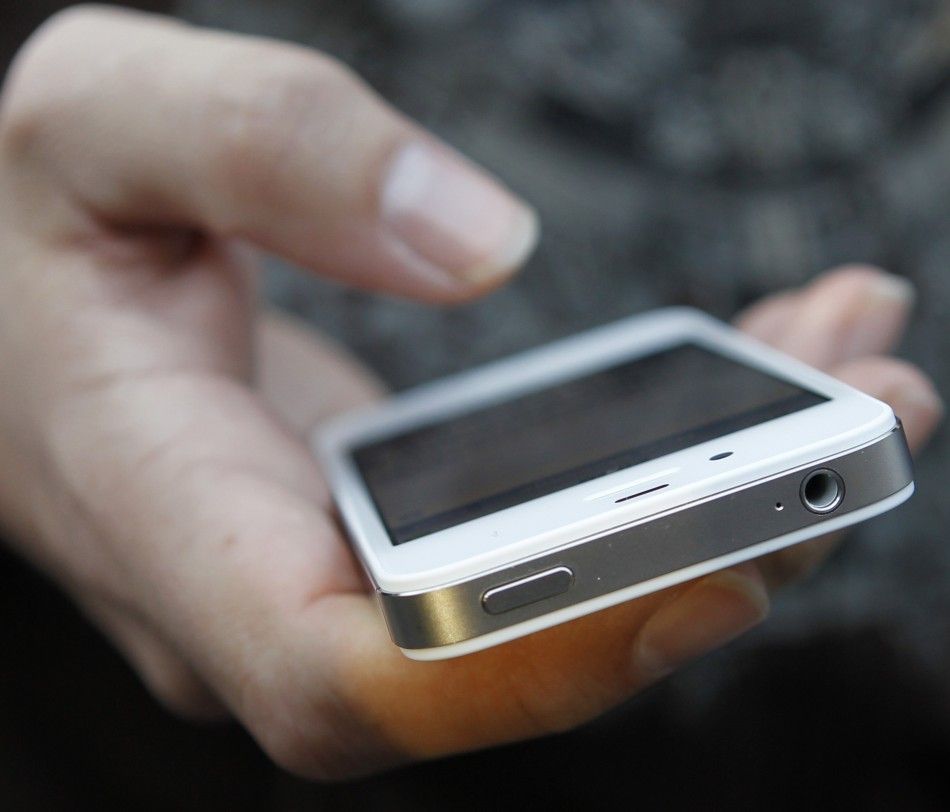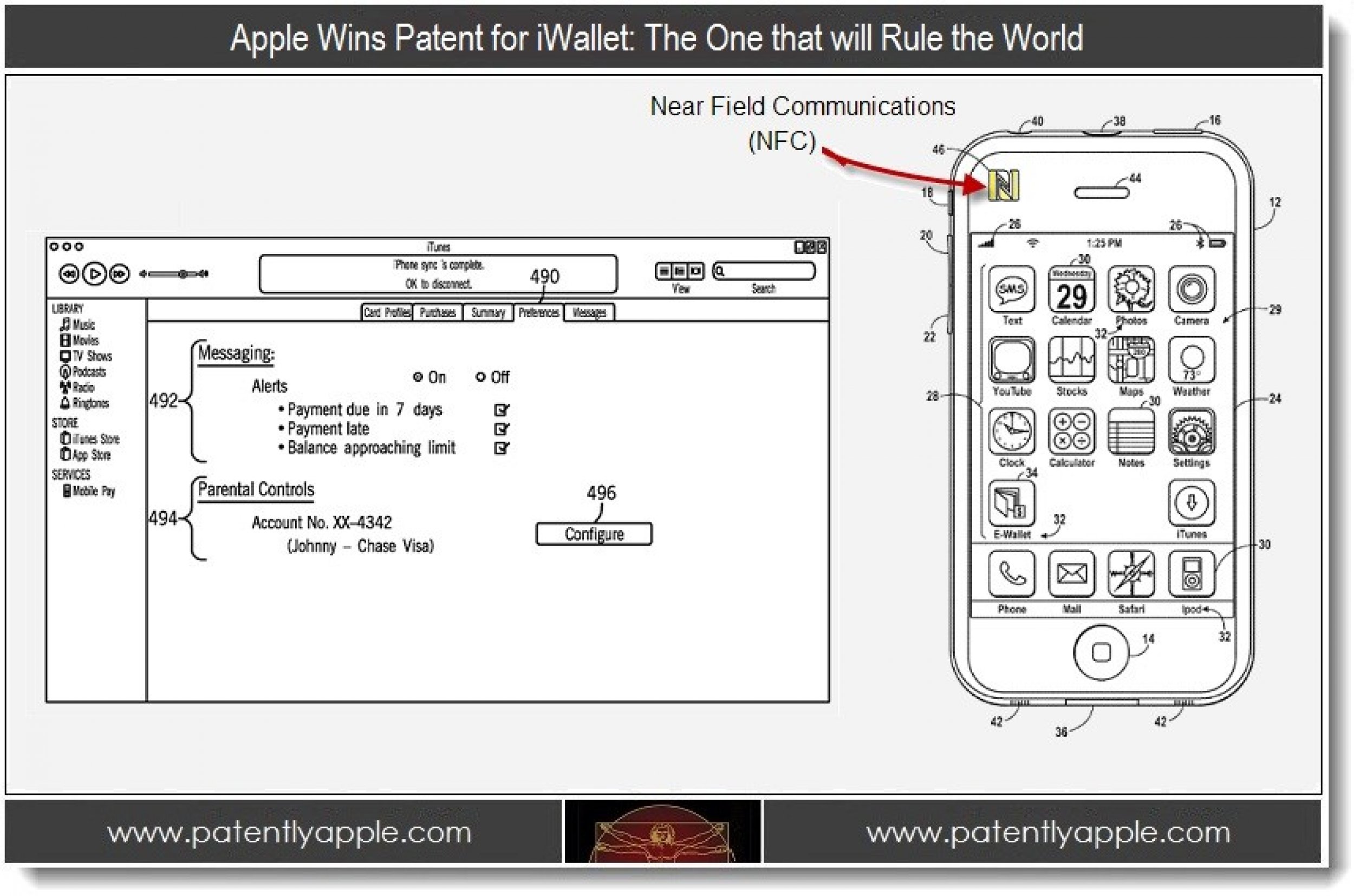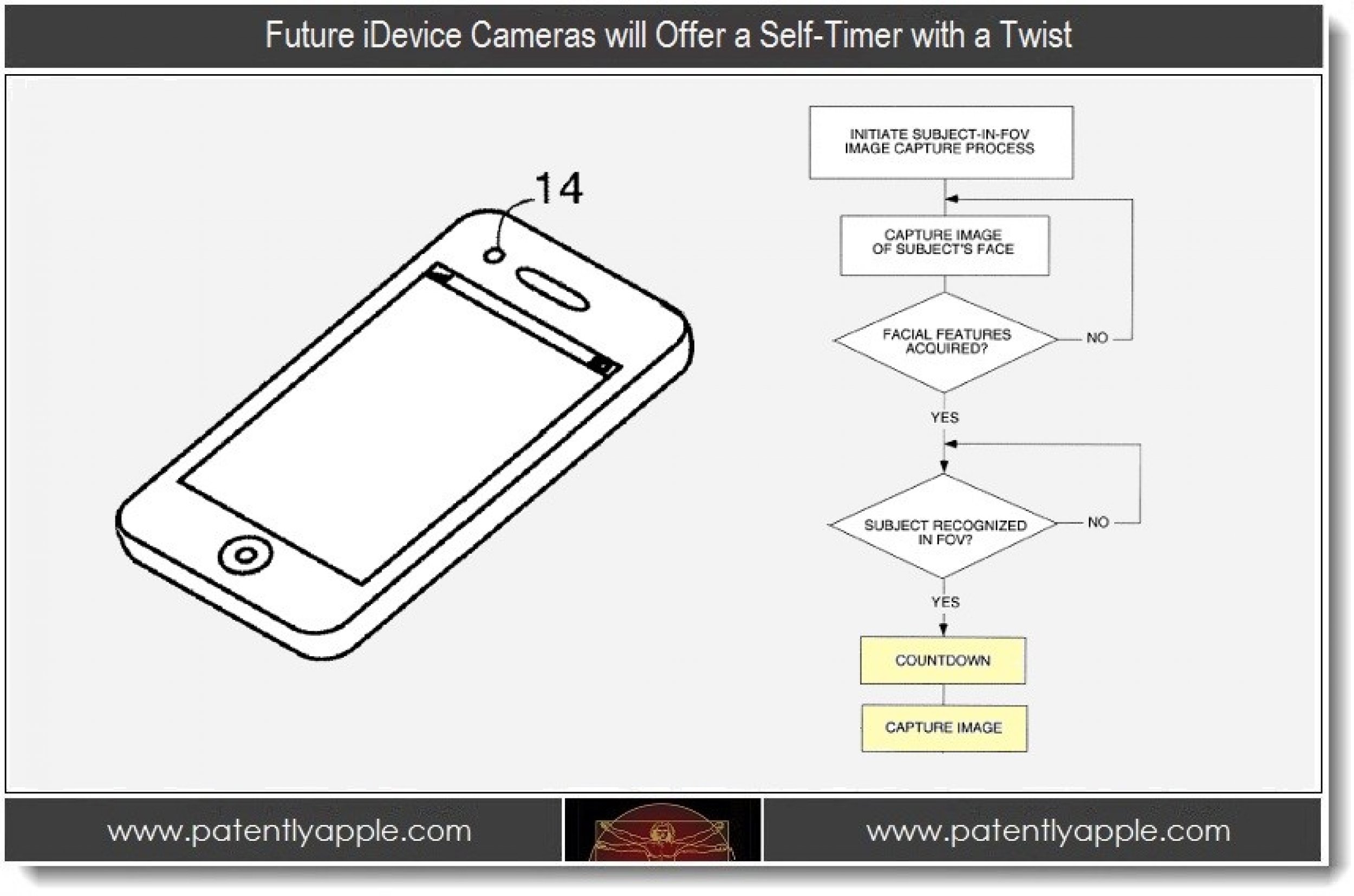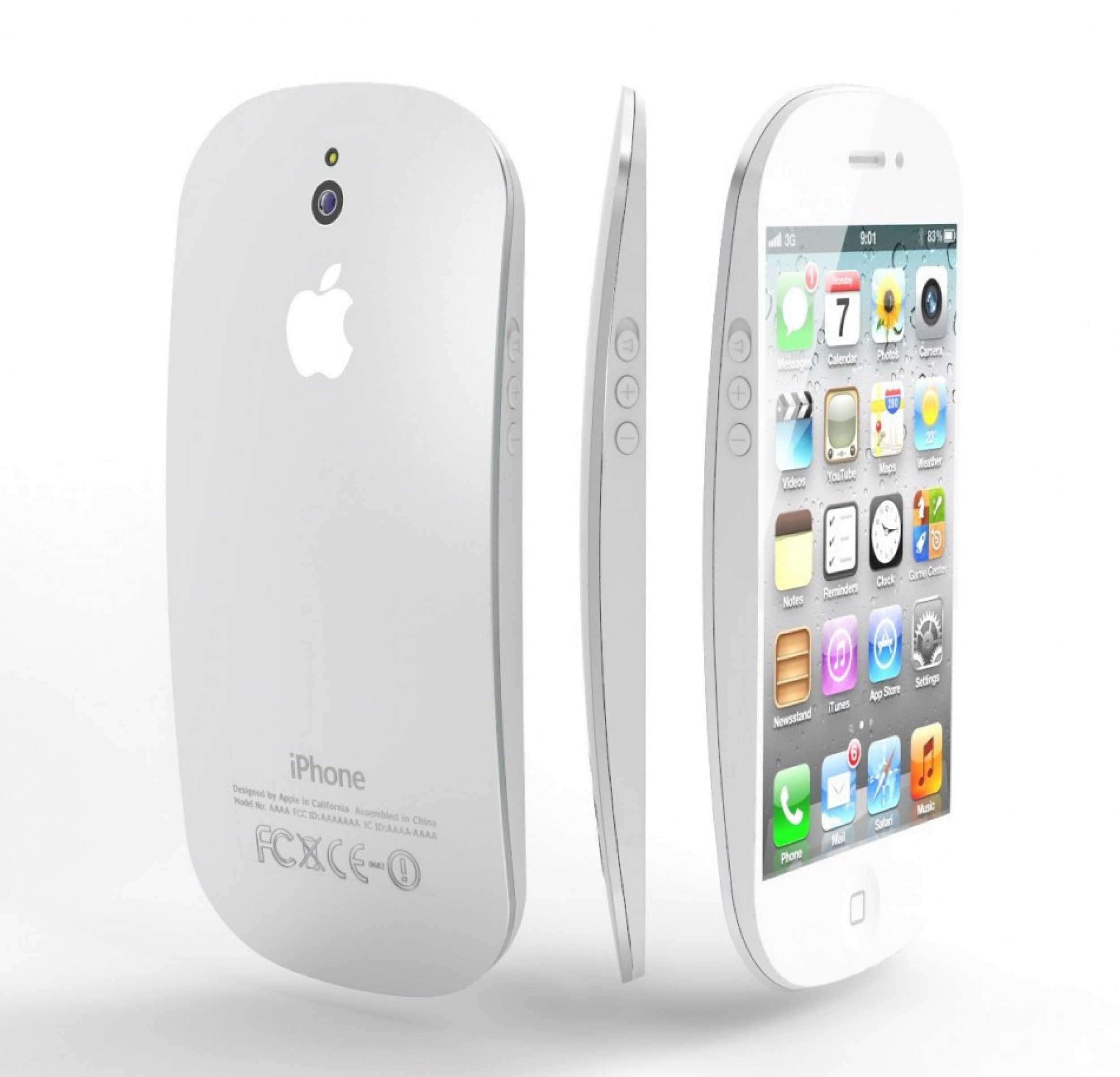Apple iPhone 5 Release Rumors: 3 New Patents That May Become Features
The next-gen iPhone, a.k.a. iPhone 5, isn't expected to launch until later this year, but that doesn't mean we can't daydream about what's inside. While little is truly known about the next iPhone, Apple loves to surprise fans with bold new features, and a number of recently-approved Apple patents could provide hints as to what we'll see come September or October.
Apple has always been conscious of protecting its intellectual properties, because many Apple patents, from the minor Slide to Unlock feature to the user interface for call management, have been copied and replicated by competitors, including Google and Android. These three new patents, however, could someday be the killer apps that help make the next-gen iPhone a revolutionary mobile device.
The iWallet
Apple won a major patent on March 6 for a piece of technology called the iWallet, which is a digital system that gives the user complete control over their subsidiary financial accounts on their iPhone, and also leverages Near-Field Communication (NFC) technology to complete credit card transactions directly on the phone as well.
Apple patented this technology at a great time, as the mobile payments space is taking off and is projected to be a future multi-billion dollar industry.
The iWallet has many different features, but it's all presented in a simple and easy-to-use way. On the iWallet home screen on the iPhone, users can see their entire credit card profiles, view statements and messages from their banks, and even adjust preferences or add additional cards. Within the preferences, users can schedule regular credit card payments and even set parental controls for their children, should they also want to use their iPhones as digital wallets. Under the parental controls, if a child exceeds a certain monetary limit -- set by the parent, of course -- the transaction could request an authorization from the parent (via their iPhone), or simply decline the request. It's extremely easy, and it makes perfect sense for those who want to manage family funds.
With an NFC chip in the iPhone, iWallet can also complete financial transactions. Merchants can set their own rules, restricting users from completing transactions based on item limits, spending limits, time period or geographic limits. When it comes time to pay for an item, the user swipes their iPhone near a designated receiver, and the transaction is completed securely and automatically.
Outside of the iPhone, users can keep track of their payments and statements within the iTunes billing system, which keeps credit card information and records safe and secure. There's a possibility that iWallet could also work with other Apple utilities, which could allow users to buy things like movie tickets directly within the apps, but only time will tell with that one.
The Photographer's Timer
Apple continues to improve upon the camera infrastructure in its iPhones, but as far as camera software goes, the iPhone has remained largely unchanged. That will change if the iPhone 5 includes the patent for a new iDevice self-timer, granted on March 8, which comes with a unique twist.
Traditionally, self-timing cameras are used to take pictures of a big group, or a self-portrait. But in Apple's self-timer, the camera will know that you are the photographer that also wants to be in the picture, and the iPhone will simply wait until it detects your face to take the picture.
But what about interruptions? What happens if I get a call after I set the self-timer? Wonder no more. If you set the timer and then your phone goes off, the timer will still wait until it has detected, recognized and verified that you are the photographer and that you're in place for the photo.
Now if only Apple patented a tripod...
Multi-Player Gaming
On March 15, the U.S. Patent and Trademark Office (PTO) published a patent application from Apple that describes a system for multi-player gaming. Similar to how the new Garageband's Jam Session feature allows groups of people to play different musical instruments together, the multiplayer gaming technology will allow groups of iPhone and iDevice users to play together, and even see the same game from different perspectives.
Believe it or not, the multiplayer game system mimics that of the Find My Friends app, in which a user's device detects other nearby devices that it recognizes as friends, and invites them to all join a common application. The unique technology also determines the relative position of those devices, so some games -- like turn-based role-playing games or card games -- can be played in a specific order.
The crux of Apple's solution determines the relative position of many devices by taking pictures of a tag, and the system monitors those shared images and decides their relative positions. Apple's technology can define a position in two or three dimensions relative to the original tag, and by transmitting a positioning matrix to the other iDevices, the information creates a comprehensive map of the devices.
Once the order is set, the users can cooperate and play with each one another as content is simultaneously broadcasted and received on the iPhone. This can work for multiple players playing the same displayed content (ex: a racing game), or multiple users playing against each other in a game (ex: a hand-to-hand fighting game like Mortal Kombat), or multiple users taking turns to play the game (like a board game or Jenga). Virtual avatars even represent one's position by displaying the avatar from a different perspective depending on the position of the player relative to the tag.
The iPhone 5: What We Know So Far
As of January, Apple was reportedly gearing up to begin production on the iPhone 5. A source from within China's Foxconn manufacturing plant told 9 to 5 Mac that various different sample iPhone prototypes were floating around the floor, but there were a number of common features among the phones, including displays that measure at least 4 inches, and longer and wider form factors that do not match that of the iPhone 4 or 4S. The iPhone 5 will reportedly retain the rectangular shape of its predecessors, which would put to bed rumors of a thinner teardrop shape.
Previous reports have said the Apple iPhone 5 will feature an improved version of Siri, the voice-activated AI system that was only released as a beta in the iPhone 4S, as well as a bigger screen. Last November, Hitachi and Sony reportedly began shipping 4-inch LCD panels for final production of new iOS devices believed to be the next-generation iPhone. Upgrading the iPhone's 3.5-inch screen to a 4-inch display would require a rebuilt Retina Display, but a bigger screen would help Apple compete against phone makers that make bigger screens, such as Samsung, while also providing a more immersive iPhone experience.
Before Apple unveiled the iPhone 4S on Oct. 4, the Internet was flooded with photos of a thin, large-screen iPhone 4. The photos were widely believed to be doctored until one Chinese site discovered mold engineerings of an iPhone 4 with a noticeably larger screen. The renderings depicted an edge-to-edge design for the iPhone's screen, which looked to measure about 3.7 inches. Component industry trackers believed that the images represented Apple's wish to compete with rival devices with bigger screens.
Apple wants its next generation of mobile devices to look beautiful, and the company is reportedly working on giving its devices greater pixel density. Bigger screens with more pixels in the Retina Display mean higher resolution for watching movies and viewing detailed images, from PDFs to X-rays to MRIs to 3D architectural renderings. Even text will appear rich and razor-sharp. While the new iPad doubles the pixel density of the iPad 2, it's likely that Apple would reconfigure the iPhone's Retina Display, not only to feature more pixels, but also to match a slightly bigger screen. Apple fans and users would benefit from a bigger and more beautiful Retina Display, but this switch could force app developers to learn an entirely new way to write their iOS software.
Given that the new iPad is also the first iDevice to feature LTE, it's a near-certainty that the high-speed network will also come to the next iPhone. Apple originally hoped to include LTE in the iPhone 4S, but Tim Cook nixed that idea, as first generation LTE chipsets force a lot of design compromises. Apple would have needed to increase the phone's thickness to accommodate a larger circuit board and a bigger battery, as it did in the new iPad.
The iPhone 4 PCB [printed circuit board] is already incredibly small, not leaving any room for an extra chip to enable LTE without shrinking the size of the battery, said Anand Shimpi, a chip expert and CEO of Anandtech.
Fortunately, Qualcomm recently unveiled the fifth iteration of its new chip, which supports TD-SCDMA, TD-LTE, HSPA+, EV-DO, embedded GPS, and LTE on TDD and FDD networks worldwide. The chip works with Android and Windows 8 devices, but by targeting so many different carriers, there's a high degree of likelihood that this will be the same chip inside the iPhone 5.
The fall could be a busy season for Apple, which could release the iPhone 5 alongside a smaller, 8-inch iPad, which is also expected to debut in October. The original report from Apple's Taiwanese supply chain was later confirmed by The Wall Street Journal, which said Apple is working on an 8-inch iPad.
On Jan. 24, Cook released Apple's record-breaking Q1 2012 earnings, announcing $46.33 billion in overall earnings, $13.1 billion in profit and $17.5 billion in cash for the quarter that ended Dec. 31, 2011. In the last 14 weeks of the year, Apple sold 37 million iPhones, 15.4 million iPads and 5.2 million Macs.
We're thrilled with our outstanding results and record-breaking sales of iPhones, iPads and Macs, Cook said. Apple's momentum is incredibly strong, and we have some amazing new products in the pipeline.
Cook echoed this sentiment at the March 7 Apple event in San Francisco, where he debuted the new iPad but also added, We're just getting started.





© Copyright IBTimes 2024. All rights reserved.





















